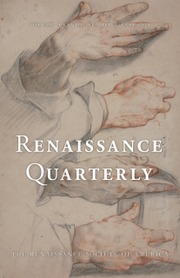The latest installment in the American Boccaccio Association’s Lecturae Boccaccii/Decameron’s Days in Perspective series faces the considerable task of creating a cohesive collection of essays on tales belonging to a day without a theme. It is a challenge that the series has not confronted since the publication of its inaugural volume, The “Decameron” First Day in Perspective, in 2004—the first being the only other open-topic day in the Decameron. However, as Susanna Barsella and Simone Marchesi demonstrate in the editors’ introductory essay—itself, they point out, a “singularity” in the series (viii)—the nature of the ninth day’s themelessness is in fact quite different from that of the first. While the latter emerges organically from Queen Pampinea’s granting “free rein” (8) to the storytellers over all aspects of their narration, the former is a result of Queen Emilia’s imposition of choice upon them. Emilia’s “rule of freedom,” borrowing from the introduction’s title, encapsulates the self-contradictory nature of the ninth day in general. In fact, the day’s propensity for disorientation (to which its elusive and often troubling tales greatly contribute), may explain yet another paradox, to which the present volume directly responds: the ninth day, though occupying a critical position in the Decameron’s narrative, remains largely understudied.
Not least of the ninth day’s “apparent oxymoron[s]” (13) is the “personified contradiction” (231) of the female monarch and staunch anti-feminist Queen Emilia herself, as examined in Albert Russell Ascoli’s essay on Decameron 9.9. Ascoli orients his reading around King Solomon, a paradigm of political leadership guided by interpretive wisdom, who also represents a long tradition of both pro- and anti-feminist ideologies. Ascoli is careful not to sanitize Emilia’s tale of its misogynistic facets, as have many “reparative” and “recuperative” interpretations (201). Rather, he highlights the complexities of the relationship between freedom and authority embodied in the enigmatic Solomon figure. Such themes (and problems) are present not only in the level of the narrative (in which the character Solomon essentially proclaims, “love those you want to be loved by, and beat your wife” [xvi]) but also in that of the brigata, where Emilia herself appears symbolically as Queen Solomon. Ascoli demonstrates how Boccaccio problematizes Emilia’s misogynist conceptions of gendered social and political hierarchies through her ineffectiveness as queen. Ultimately, he argues, the unoriginality of all of the ninth day’s tales indicates an “un-ruly, unstructured regime” that results in “a generalized failure of creative imagination” and contradicts the “liberative effect” that Emilia has advertised (222). Ascoli’s reading concludes with an invitation to consider its implications—that is, “the possibilities and limitations of human knowledge” (234)—within the cultural milieu in which the Decameron was written, thus pointing to the “wider discourses, both social and literary” to which all of the day’s stories, as Barsella and Marchesi note, connect (ix).
Throughout the collection, creative interpretation (or, in the editors’ words, “novel modes of expressing a new perception of reality” [ix]) is not only the basis of the contributing scholars’ critical lenses but also a prominent theme in the narratives analyzed. For example, Maria Pia Ellero reads Decameron 9.2 within the classical tradition of motto (comeback) to reveal how the young nun’s ironic interpretation of a man’s breeches as her superior’s headdress may be Boccaccio’s commentary on “a world where appearances blind” and where “access to reality” is not guaranteed (65). In her essay on Decameron 7.7, Grace Delmolino engages in a meticulous study of the protagonist’s descriptor, ritrosa (self-willed) to illustrate how she refutes her husband’s interpretation of his dream as her future reality, and instead opts for firsthand experience and thus self-agency. In each of these, the scholars’ creativity allows for new readings of these only seemingly simple and unoriginal tales. Their analyses highlight the myriad ways in which the themes of interpretation, authority, freedom, and gender intersect—in the world within the Decameron’s narrative and beyond.
With The “Decameron” Ninth Day in Perspective, Barsella and Marchesi aim to “provide a reticular image of the day” (vii) in a manner that is “polyphonic yet organized” (xi). And indeed, like the day it examines, this collection defies categorization. Nevertheless, strong thematic links run through its essays, made more visible by the cornice provided by the editors, who turn out to be far more gracious leaders than Emilia. They define the ninth day of the Decameron as a “liminal moment of pause” before the concluding drama of the tenth day (3); likewise, this volume is pregnant (like the gullible Calandrino believes himself to be in Decameron 9.3) with potential energy. Reading its innovative studies of often marginalized novelle feels like a deep breath before the plunge—energizing and crucial.



